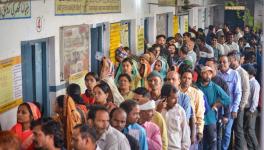UP Polls: Over 40 Lives Recently Lost to Deadly Malaria, Healthcare Not a Poll Plank in Sonbhadra Villages
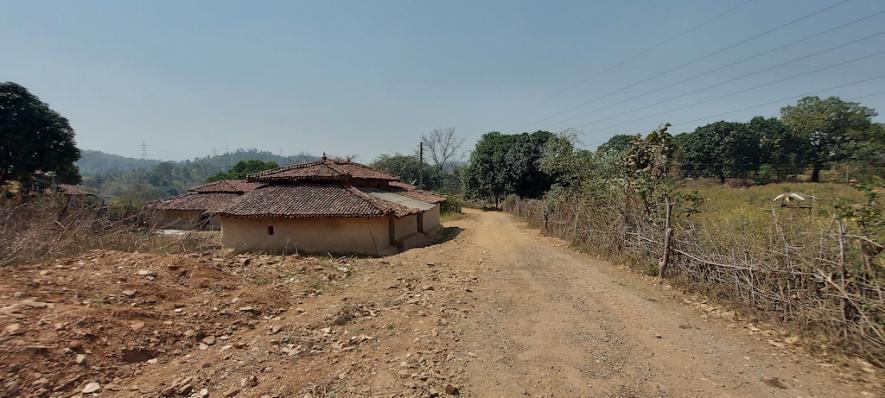
Sonbhadra (Uttar Pradesh): Pratibha, 23, entered a wedlock with Ajay Kumar Prajapati, 25, on April 23, 2017. Two children were born to the couple. One is a three-year-old and the other is six months. In August 2021, Pratibha developed fever — which would often spike despite constant medication. She was expecting her youngest child and was seven months pregnant at that time.
She was admitted to a private hospital for 15 days. She tested Pf positive (Plasmodium falciparum — a parasite, which causes the deadliest form of malaria). The second time her condition deteriorated, she was rushed to the local Hindalco Hospital — where doctors referred her to the district hospital at Robertsganj (also known as Sonbhadra). She delivered her baby there. Soon after the delivery, she was referred again to Sir Sunderlal Hospital at the Banaras Hindu University (BHU).
Twenty-four hours after her admission there, she died on October 3, 2021. Her death certificate noted that she died of CVA (cerebrovascular accident, causing sudden death of some brain cells), postpartum sepsis (which occurs when bacteria infect the uterus and surrounding areas after a woman gives birth) and cardiopulmonary arrest (sudden loss of heart function, breathing and consciousness).
Notably, none of her medical records was handed over to her family — except the death certificate.
Pratibha’s mother-in-law, Phoolmati, who cooks midday meals at a local primary school, is now taking care of the toddler.
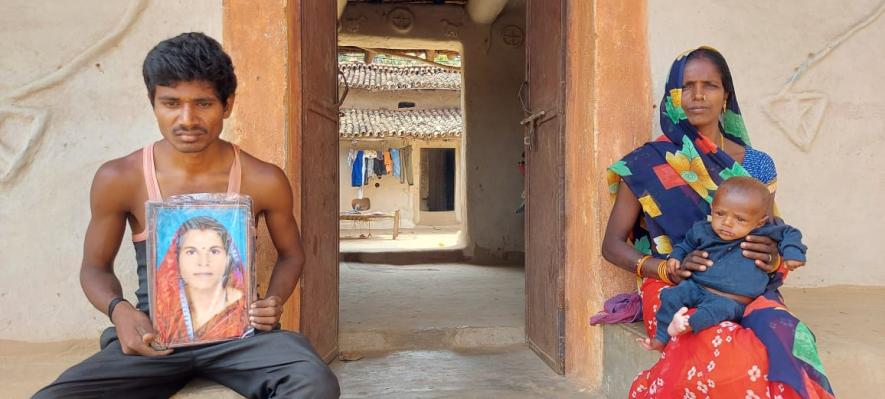
Ajay's mother Phoolmati with her grandson whose mother Pratibha passed away soon after his birth.
“Not only that I lost my life partner who was always with me in all highs and lows, my children lost their mother at such a young age. I did what I could do to save her, but failed. Now, I don’t know how my child will be raised,” Ajay, a resident of Markara village in Myorpur block from Sonbhadra district’s Dudhi tehsil (sub-district), told NewsClick.
He is heavily indebted as he spent on her treatment Rs 1.2 lakh, which he has borrowed in three instalments from a private moneylender.
His child is so malnourished and underweight that he could not be vaccinated. “I have suggested to his grandmother that they feed her cow’s milk, but they are unable to do it for two reasons: their financial condition and cow milk is deficient in this area,” said Parwati, an auxiliary nurse midwife (ANM) stationed at Makara Public Health Centre (PHC).
Ajay’s suffering did not end here. Fifteen days after his wife Pratibha’s death, his 14-month-old niece (sister’s daughter), Sarita, breathed her last on September 18, 2021. She too was found positive for the fatal Pf. After her fever shot up, she was taken to a hospital. She died on the way.
Sarita was said to have contracted the infection from her lactating mother, Kusum, 23, who was also tested positive for malaria parasite. When her daughter died, she was admitted to a private hospital at Robertsganj and given five units of platelets and two units of blood.
The mother of a three-year-old son, she had earlier lost a 14-month baby to the disease.
The dangerous disease has been wreaking havoc in at least six hamlets (Makara, Gadha, Bijul Jhariya, Aghariyah Didh Bodhrahwan, Ban Paisa) of Sindur Makara and Pati gram panchayats (village-governing bodies) in Sonbhadra’s Myorpur block close, to the industrial town of Renukoot.
At least 40 deaths have been reported in the last two months in these hamlets, which together have a population of around 6,000 people.
Gond tribe, which is listed among the Scheduled Tribes (ST), makes up the bulk of the population here. According to the Census 2011, Sonbhadra’s population is made up of around 23% Scheduled Castes and 21% Scheduled Tribes.
The villages are also inhabited by Other Backward Castes (OBC) such as Prajapati and Patel whose condition is no better.
The recent deaths and the saga of helplessness, however, have failed to shake the conscience of the government. The local administration or the government have not developed any infrastructure or additional facilities to ensure that the endemic does not return.
Close to Ajay’s house lives 47-year-old Amravati and 65-year-old Manghi in a thatched, dilapidated house made of clay, straw and reeds. Both daughter- and mother-in-law duo lost their husbands to the disease. The family is now left with no male members – on whom the two women typically relied on for their livelihood.
Amravati's husband, Ram Pyare (48) died on August 15, 2021. He was sick with fever and abdominal pain. After his body temperature and the pain did not subside despite medication, he was taken to the Sonbhadra’s district hospital where he was admitted and underwent treatment for a week. Even after several medical examinations, doctors were clueless about the disease.
He was referred to the BHU’s medical college and hospital in Varanasi. But before he could be shifted, he breathed his last. He was reported to have been suffering from typhoid and malaria coinfection.
Five days after Pyare’s death, his father, Ram Baran (70), too, died of malaria on August 20 last year after suffering from fever for two days. Because of the abject poverty and finances already drained due to the son’s medical treatment, Ram Baran could not be taken to any hospital.
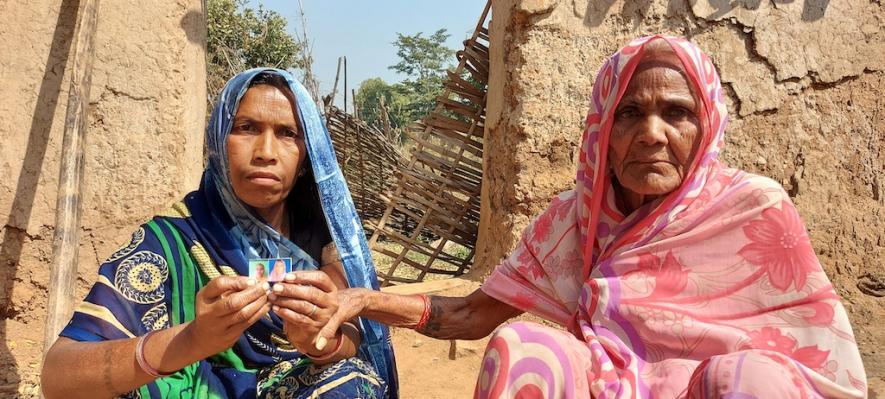
Amravati (L) with her mother-in-law Manghi (R). Both lost their husbands to malaria.
Now, Amravati has to sustain her only minor son and the ailing mother-in-law, who is unable to walk properly. “Naa puchin saahib ki pariwar kaise chalat hai (don’t ask us how we are surviving),” said the visibly upset woman who hardly gets any work to earn livelihood.
It is the people around her who keep extending financial help to keep the family running. “We only get free ration from the government and nothing else. There are no old age and widow pensions,” she added.
Residents from these six hamlets told NewsClick that a majority of them (about 90%, claimed some) are deprived of the Pradhan Mantri Awas Yojna (PMAY), under which a sum of Rs 1.30 lakh is given to people in rural areas for construction of a pucca house. They have no reliable source of employment. They are allotted work under the Mahatma Gandhi National Rural Employment Guarantee (MGNREGA) Act, 2005, “once in a blue moon”, but don’t get payment for months together or even for as long as a year.
The villages have only one PHC at Makara where no doctor was available when NewsClick visited during the working hours. Two employees and an ANM (Parwati) were present at the health centre who said that the “doctor saheb has just left”.
One of the officials, refusing to be named, said that the PHC caters to a large area only, but only one MBBS doctor is deputed here.
The state is facing a shortfall of 2,277 doctors. Its 942 primary health centres (PHCs) continue to operate without electricity, regular water supply and all-weather motorable approach road. The PHCs in the state have the worst patient-to-doctor ratio and infrastructure in the country to cater to the poorest patients.
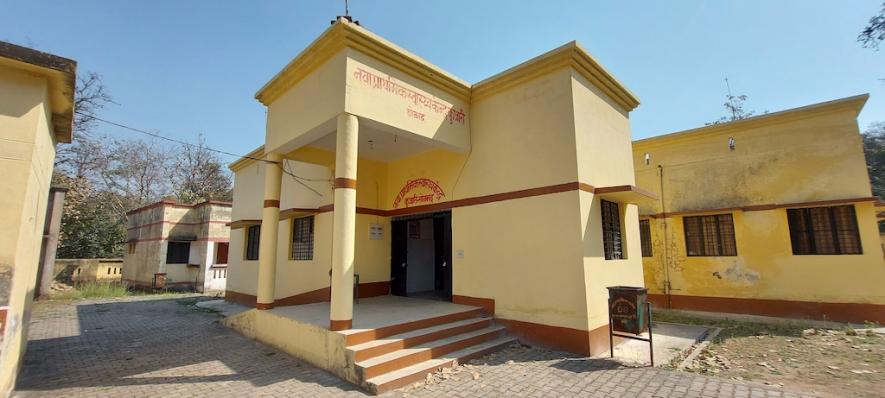
Around two kilometres from Makara lies Gadha village where Uday Raj Gaud, 70, died 10 months back – just three days after he developed fever. He also had tested positive for malaria parasite.
“The election of pradhans (village heads) was going on, and he was actively engaged in campaigning. One day, after he returned from the poll canvassing in the area, he complained of fever, breathlessness, and seizure. We rushed him to Hindalco Hospital where doctors refused to admit him. We did not have resources to take him to either a private hospital or district hospital, which is around 50 kilometres away from here; and therefore, we consulted quacks who also refused to treat him given his serious condition. He breathed his last as we were planning to rush him to the BHU’s medical college,” narrated Kalpa.
Not even two months had passed when Uday’s 30-year-old son, Ram Charan — a father of four minors — died of malaria. He was unwell for one month. “He had become so weak that he had stopped all movement a few days before his death,” said his family members.
The family has 1.5 bigha (0.92 acre) of land between two brothers.
The people in these villages have very small landholdings. Because of being a water-deficient region, they depend mainly on rainfall. Due to low levels of groundwater (at a depth of 200-250 feet), irrigation using wells is not feasible. Pumping water from such a depth is expensive as well and not affordable to most of the residents here.
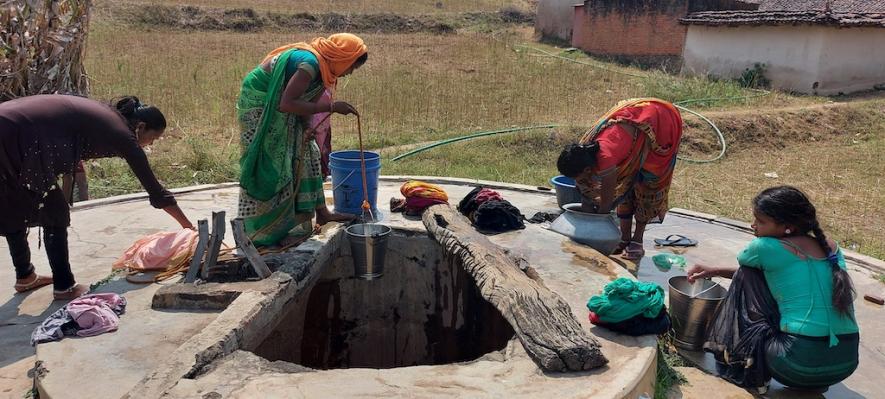
Mainly chana (gram), arhar (pigeon pea), masoor (lentil), mustard, onion, and wheat are grown here for household uses. The residents here don’t do agricultural farming for commercial purposes as yield is too low in the water-starved region.
Of the total 250 pucca houses in the two panchayats, with around 5,000 residences, 100 have been constructed recently under the PMAY. The remaining 150 houses were constructed under the Indira Awas Yojna.
When the malaria deaths made the headlines in November last year, the district administration seemed to have woken up from its slumber. All high-ranking officials visited the affected villages. But months later, nothing seems to have been done to prevent the tragedy in future.
BJP MLA and minister Sanjeev Kumar Gond, who represents Obra (reserved) constituency (under which these hamlets fall), too had reached the villages and cited contaminated drinking water as the reason for the deaths.
Villagers were supplied drinking water through water tankers for some time. They were promised that water treatment plants would be set up in the villages, but nothing has happened so far. Even the temporary water supply has been stopped. The villagers are once again drinking the same “contaminated” water they get from the open wells in the region.
Gond, the minister for social welfare in the state government, had also promised that the deceased people’s families would receive some compensation, but it turned out to be a lip service.
Talking about the prevailing situation in the affected villages, Sonbhadra’s Chief Medical Officer Dr Nem Singh claimed, “We are continuously running awareness campaigns. Malaria deaths have come down significantly. The officials who were found guilty of negligence have been removed from the areas, and show cause notices have been served to them.”
He said that the Health Department is carrying out continuous fogging in the affected areas.
“Water samples have also been taken. Every single death in these areas is being audited. We cannot force anyone to get medical treatments only from government hospitals, but we are constantly making people aware of the good and free treatment government hospitals provide,” he said.
The villagers contradicted the claims, saying that the fogging had been done only once in November last year. They also showed details of the fogging written on the walls of most of the houses.
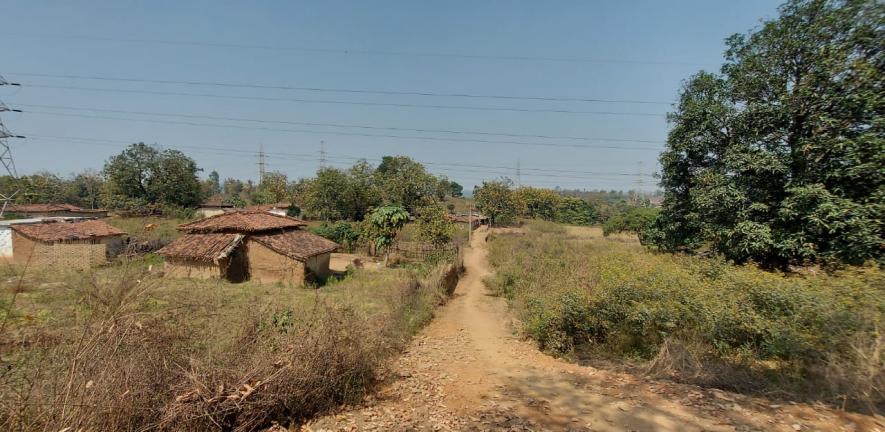
Unfortunately, this is not an issue in the ongoing elections. Representatives belonging to different political parties are reaching out to the villagers and giving them assurances. Though the Bharatiya Janata Party (BJP)’s flags unfurling atop almost every house in the villages is a common sight here, voters don’t seem to vovalise their support to the ruling party.
OBRA CONSTITUENCY AT A GLANCE
Obra is one of the 403 Uttar Pradesh Legislative Assembly constituencies, which falls under the Sonbhadra district. The election will be held here on March 7 in the final phase.
In 2017, the Obra Assembly seat had 3,07,992 registered voters. Of them, 1,69,473 were male and 1,38,519 were female voters. 1.4% of the votes were casted for NOTA.
In 2017, 11 candidates were competing for the Obra Assembly constituency seat. Obra was one of 312 seats won by the BJP. It was a one-way contest with BJP’s Sanjiv Kumar comfortably winning the election, defeating Samajwadi Party’s Ravi Gond by a huge margin of 44,269 votes.
The top three candidates split 88.9% of the votes among them. The BJP got a total of 78,058 votes, while the SP secured 33,789 votes. Bahujan Samaj Party’s candidate Virendra Pratap Singh grabbed the third spot with 29,113 votes. The top three parties got 49.2%, 21.3% and 18.4% of the votes respectively.
Bahujan Samaj Party’s Sunil Kumar had defeated BJP’s Devendra Prasad Shastri by 7,060 votes in the 2012 elections.
This time, the BJP and the SP are engaged in an intense face-off, with observers unable to make strong predictions.
Get the latest reports & analysis with people's perspective on Protests, movements & deep analytical videos, discussions of the current affairs in your Telegram app. Subscribe to NewsClick's Telegram channel & get Real-Time updates on stories, as they get published on our website.


















